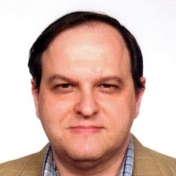Fluctuations and Highly Non-linear Phenomena in Superfluids and Superconductors II
A special issue of Condensed Matter (ISSN 2410-3896). This special issue belongs to the section "Superconductivity".
Deadline for manuscript submissions: closed (31 January 2020) | Viewed by 28238
Special Issue Editors
Interests: high-Tc superconductivity (theory and phenomenology); multiband superconductivity; quantum size effects and shape resonances in superconductors; nanoscale superconductors; superconducting heterostructures; BCS-BEC crossover; pseudogap; superconducting fluctuations; ultracold fermions: superfluidity and BCS-BEC crossover; electron–hole superfluidity
Special Issues, Collections and Topics in MDPI journals
Interests: ultracold atoms; disordered systems; mesoscopic physics
Special Issues, Collections and Topics in MDPI journals
Interests: Bose-Einstein condensation; ultracold atoms; quantum statistical physics
Special Issues, Collections and Topics in MDPI journals
Special Issue Information
Dear Colleagues,
This Special Issue is dedicated to the proceedings of the conference SuperFluctuations 2019 (http://www.multisuper.org/superfluctuations-2019), which will be held in Padova, Italy, 2–4 September 2019. This international conference will highlight recent advances in diverse fields of superconductivity and superfluidity. You are invited to submit a full manuscript for consideration and possible publication in this joint Special Issue. Submissions will be rapidly reviewed and published immediately, if accepted. Invited and leading contributed papers will focus on the following topics:
- Fluctuations and BCS-BEC crossover phenomena in multicomponent and low dimensional systems;
- Quantum Technologies and Novel Phenomena with Bose and Fermi Mixtures;
- Highly nonlinear phenomena: Josephson and Andreev effects, topological defects, skyrmions and solitons, vortex states;
- Novel quantum phenomena in multicomponent / multigap superconductors and superfluids;
- Innovative numerical methods: Machine Learning and its applications.
Prof. Dr. Andrea Perali
Prof. Dr. Luca Dell'Anna
Prof. Dr. Luca Salasnich
Guest Editors
Manuscript Submission Information
Manuscripts should be submitted online at www.mdpi.com by registering and logging in to this website. Once you are registered, click here to go to the submission form. Manuscripts can be submitted until the deadline. All submissions that pass pre-check are peer-reviewed. Accepted papers will be published continuously in the journal (as soon as accepted) and will be listed together on the special issue website. Research articles, review articles as well as short communications are invited. For planned papers, a title and short abstract (about 100 words) can be sent to the Editorial Office for announcement on this website.
Submitted manuscripts should not have been published previously, nor be under consideration for publication elsewhere (except conference proceedings papers). All manuscripts are thoroughly refereed through a single-blind peer-review process. A guide for authors and other relevant information for submission of manuscripts is available on the Instructions for Authors page. Condensed Matter is an international peer-reviewed open access quarterly journal published by MDPI.
Please visit the Instructions for Authors page before submitting a manuscript. The Article Processing Charge (APC) for publication in this open access journal is 1600 CHF (Swiss Francs). Submitted papers should be well formatted and use good English. Authors may use MDPI's English editing service prior to publication or during author revisions.
Keywords
- BCS-BEC crossober
- multicomponent superfluids
- Bose-Fermi mixtures
- machine learning
- topological quantum matter
- quantum technologies
- vortex states
Related Special Issues
- Fluctuations and Highly Non-linear Phenomena in Superfluids and Superconductors III in Condensed Matter (6 articles)
- Fluctuations and Highly Non-Linear Phenomena in Superfluids and Superconductors VI in Condensed Matter (5 articles)
- Fluctuations and Highly Non-linear Phenomena in Superfluids and Superconductors VII in Condensed Matter (7 articles)
- Proceedings of the conference SuperFluctuations 2017 in Condensed Matter (5 articles)
- Fluctuations and Highly Non-linear Phenomena in Superfluids and Superconductors in Condensed Matter (5 articles)







